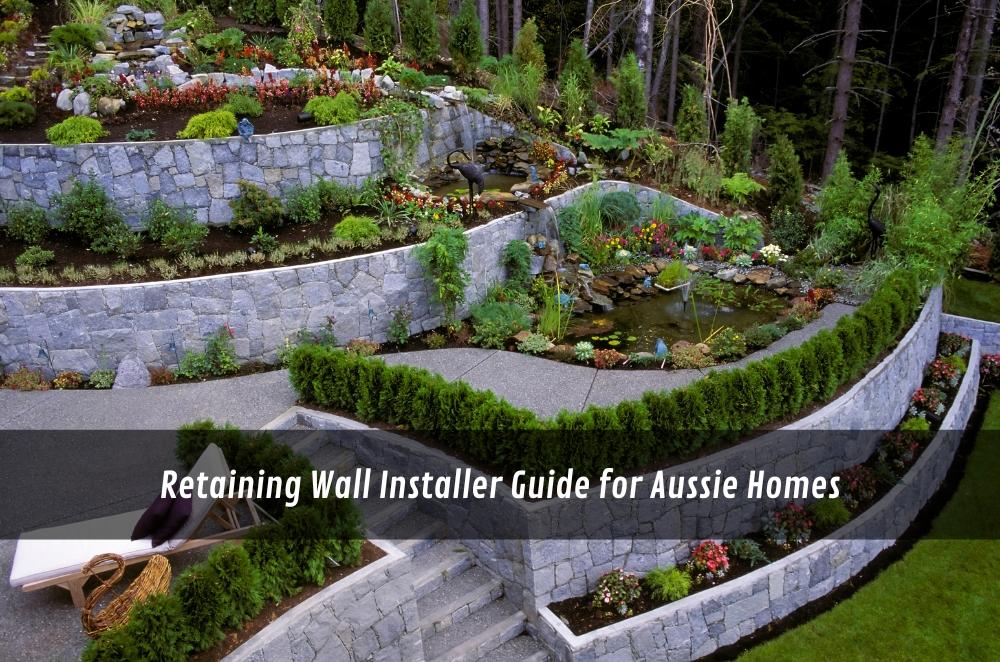Retaining Wall Installer Guide for Aussie Homes

If you’ve ever stood in your backyard after heavy rain and watched soil shift or garden beds wash away, you’ll know how valuable a solid retaining wall can be. These structures don’t just hold earth in place; they shape outdoor spaces into something practical and lasting. But the real difference isn’t the blocks or timber you choose — it’s the hands and minds that put them together. A skilled installer will think beyond appearance, considering slope, soil type, and how water moves across your property. That’s why understanding the process of retaining wall installation can give you the confidence to ask better questions and spot when something doesn’t sound quite right. In my experience, the most reliable installers are the ones who explain their steps clearly, walk you through likely challenges, and treat preparation as the foundation for everything that follows.
What a thorough site assessment actually looks like
A good installer starts before the first shovel hits the ground. They’ll read the block, not just the brief — and that changes everything.
-
Soil checks: how clay, sand, or fill will behave under load and in heavy rain.
-
Water paths: where roof run-off, subsoil moisture, and overland flow naturally travel.
-
Loads and use: vehicle access, adjacent structures, and planting plans that might add a surcharge.
-
Staging: when excavation occurs, where the spoil goes, and how compaction will be verified.
Beyond the ground science, note how they communicate. Precise answers to “how will you protect nearby roots?” or “what’s your compaction method?” usually reflect disciplined workmanship on site. If those answers feel vague, keep looking.
Drainage, soil, and approvals explained
Water is the quiet force behind most retaining failures. The simple rule: manage it before it manages you. That’s why credible installers plan for weep paths, geotextile separation, subsoil piping, and free-draining backfill rather than treating them as optional extras.
It’s also worth remembering that walls aren’t just a design choice — they sit inside a framework of shared boundaries and neighbour agreements. In New South Wales, retaining wall legal requirements set out where responsibility lies, who maintains the structure, and what happens if a wall impacts adjoining properties. Knowing these basics early keeps projects on a good footing and helps prevent disputes down the line.
Two practical habits make a difference. First, think “path”, not “pipe”: water needs a continuous route that won’t clog. Second, respect the soil you have — clay demands patience, sand asks for restraint. A thoughtful installer will tune the build method accordingly.
Choosing materials for style and longevity
Materials are less about fashion and more about fit for purpose. Concrete blocks bring modular consistency and smart drainage options. Timber posts suit lighter applications with a natural look, but need protection from soil contact and moisture. Rock can be beautiful and forgiving on curvy sites, provided the base is compacted and interlocked correctly. Your installer’s role is to align look and lifespan with how the space will be used.
When the brief leans toward classic textures, many homeowners gravitate to a stone retaining wall. The blend of structure and organic character works especially well beside natives and gravel paths. Just make sure the practical bits keep pace with the aesthetic: the base course must be true, and the back-of-wall drainage needs the same attention you’d give a block system.
-
Visual continuity: match caps, steps, and edges so the wall ties in with paths and patios.
-
Maintenance plan: think ahead about cleaning, re-sealing (if applicable), and vegetation management.
-
Access for fixes: keep drainage outlets and weep holes visible for quick checks after storms.
-
Safe transitions: soften level changes with benches or planting pockets to guide foot traffic.
Building for durability: workmanship and maintenance
Even the best design falters with sloppy execution. Watch for three workmanship tells. First, compaction is treated as a step, not an afterthought — base layers are built in lifts and checked. Second, alignment is fussed over — string lines, laser levels, and careful course checks keep the face true. Third, the crew keeps the site tidy — materials staged where they’ll be used, offcuts managed, and trench safety considered.
Routine care is straightforward and prevents headaches later. Clear debris from weep holes after windy weekends. Keep leaf litter from building up along the toe. If you’re planting above, choose species that won’t invade drainage zones. Where a path meets the wall, keep a gentle fall so water moves away rather than pooling.
-
Foundations: base depth and width sized to soil and wall height, not guesswork.
-
Interfaces: clean, sealed joints where walls meet paths or steps to prevent water ingress.
-
Corners and returns: properly tied, not patched, so loads transfer cleanly.
-
Documentation: basic photos and notes of what’s behind the wall for future reference.
Questions worth asking before you give the go-ahead
A small set of questions can tell you more than pages of marketing. Use them to compare, not to interrogate.
-
“How will you stage excavation, drainage, and backfill on this site?”
-
“What’s your approach to compaction and how do you verify it?”
-
“Where do you expect water to go once the wall is in place?”
-
“If we change materials or height, what else changes in your method?”
Pay attention to how quickly someone jumps to surface details. You want substance first, finishes second. A contractor who maps the site, explains trade-offs, and documents what’s going on nd the wall is setting you up for a tidy, durable result.
Final thoughts
A retaining wall should feel like it’s always belonged on your block — steady underfoot, tidy after rain, easy to live with. Pick an installer who starts with the ground, not the glossy bits. When it comes to shaping the overall look, garden retaining wall design ideas often provide inspiration for features like curves, caps, or planting pockets that work with the structure rather than against it. And when your shortlist is set, revisit the basics: site assessment, drainage path, and the sequence they’ll follow on the tools. That clarity is what turns a complicated slope into a quiet, useful space you use every week.







